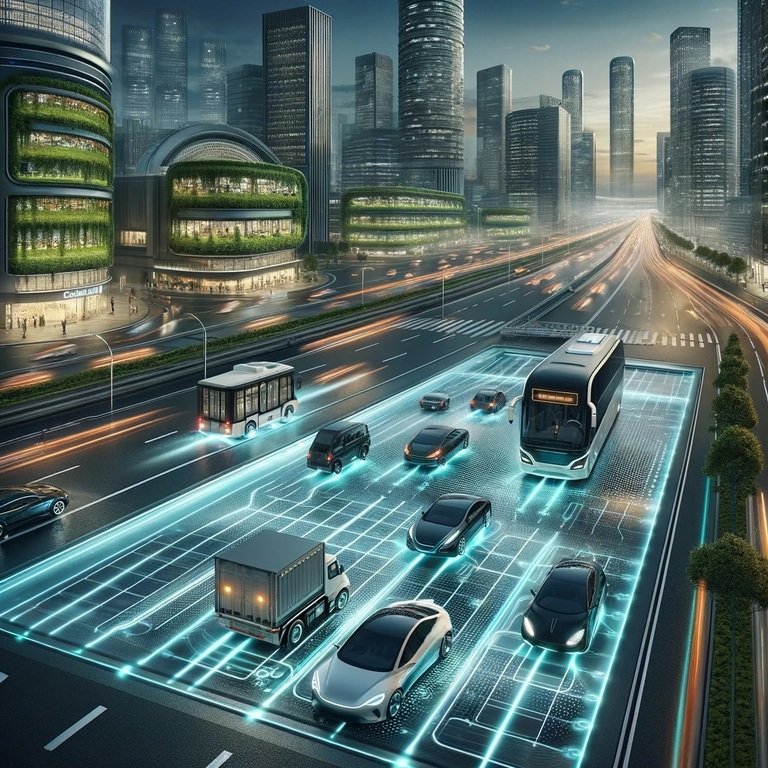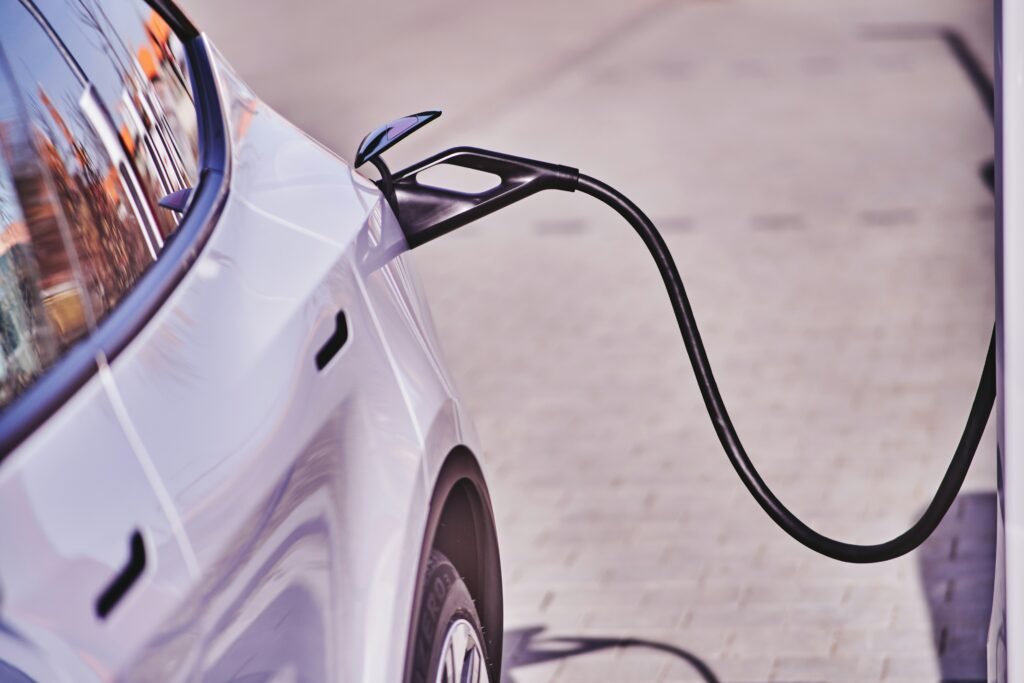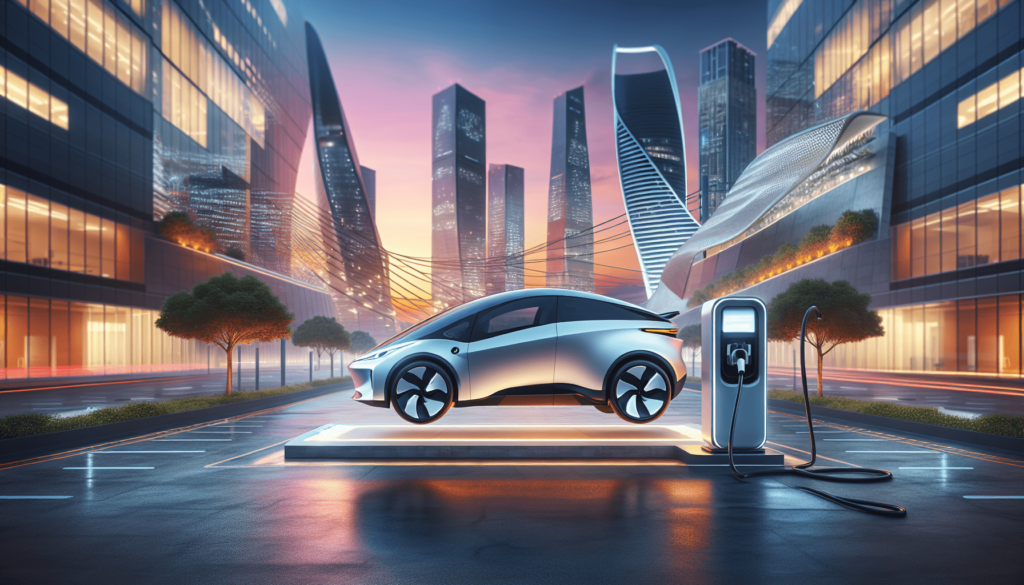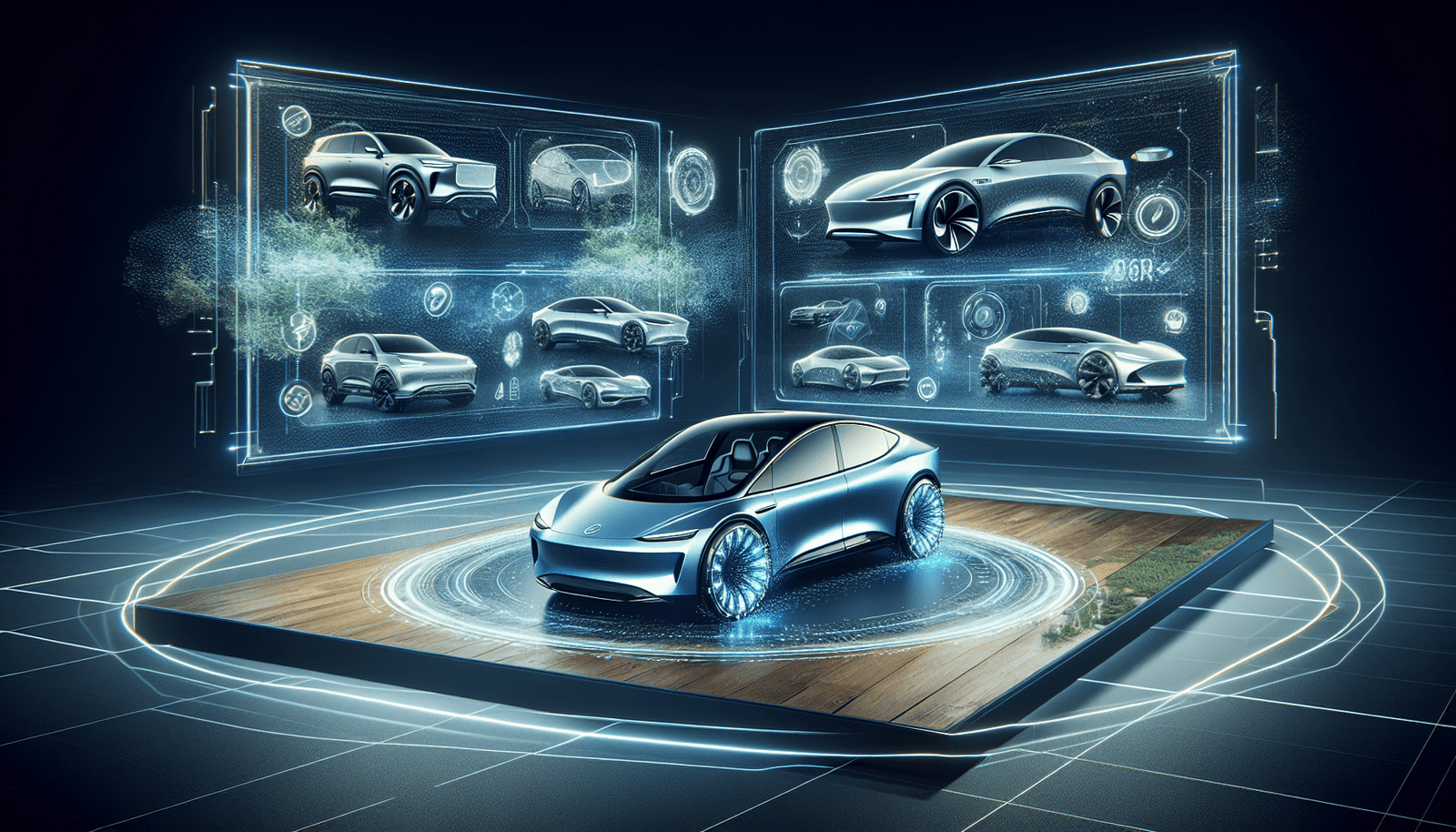Imagine driving your electric vehicle (EV) and never having to worry about finding a charging station or fumbling with cords again. That’s exactly where the future of EV technology is headed with the advent of wireless charging. This captivating shift promises to revolutionize how we power our rides, making the whole process as seamless as parking your car. Let’s explore what’s on the horizon for this game-changing innovation and how it’s set to make EV ownership more convenient than ever before.
Overview of Wireless EV Charging
Definition and Basic Principles
Wireless EV charging might sound like something straight out of a sci-fi novel, but it’s rapidly becoming a reality. At its core, it involves transferring power from a source to an electric vehicle (EV) without the need for cables or plugs. This magic is achieved through a process known as inductive charging. Imagine how your wireless toothbrush or smartphone charges – a similar principle is at play here. A charging station (the pad on the ground) generates an electromagnetic field, which is captured by a receiver in the EV and converted back into electric current to charge the battery. It’s wizardry of the highest order, brought to life by science.
Comparison with Traditional Charging Methods
Now, you might wonder, “How does this stack up against plugging in my EV?” Traditional charging methods require you to physically plug in your vehicle to a charging station, which can sometimes be a hassle, especially in inclement weather or if you’re running behind on your schedule. Wireless charging, on the other hand, simplifies the whole process. You merely park your vehicle over a charging pad, and voila, it starts charging. No fumbling with cables or worrying about connector compatibility.
Advantages of Wireless Charging
The appeal of wireless charging isn’t just in its no-fuss methodology. It promises a cleaner, more integrated approach to EV charging. There’s less physical wear and tear on charging equipment, and it paves the way for innovative solutions like charging vehicles while they’re moving. Plus, it’s inherently safer – there are no exposed cables to trip over or get damaged, reducing the risk of electric shocks. It’s a game-changer for EV owners, making the whole experience smoother and more convenient.
Dynamic Wireless Charging Technologies
In-road Charging Systems
Imagine driving your EV and never worrying about running out of juice because the road itself charges your vehicle as you go. That’s the promise of in-road charging systems. These systems embed charging coils beneath the surface of roads, creating a seamless charging experience. Vehicles equipped with compatible receivers can charge dynamically, eliminating range anxiety and making longer trips more feasible without frequent stops.
Dynamic Charging for Public Transport
Public transportation stands to benefit immensely from dynamic wireless charging. Buses or trams can be continuously charged along their routes, significantly reducing downtime and the need for large, bulky batteries. It ensures that public transport vehicles can operate longer, more efficiently, and with less environmental impact.
Challenges in Implementation
As exciting as dynamic wireless charging is, it’s not without its hurdles. The primary challenge is the substantial infrastructure investment required to embed charging coils into existing roads. There’s also the need for widespread adoption of compatible technology in vehicles. Additionally, concerns around efficiency, cost, and the impact on the environment during the construction phase need addressing.

Static Wireless Charging Developments
Home-based Charging Solutions
For most EV owners, home is where the charging starts and ends. Home-based wireless charging solutions are making this process as effortless as possible. Instead of plugging in, you’d simply park your vehicle over a pad installed in your garage or driveway, and charging begins. It’s the convenience factor that’s really appealing here, making EV ownership fit seamlessly into daily life.
Parking Space Charging Solutions
Cities and businesses are starting to catch on to the convenience of wireless charging, installing pads in parking spaces. This allows EV drivers to charge while they shop, work, or enjoy a meal. It’s a smart way to integrate charging into everyday activities, reducing the “charging time” perception by making it a background activity.
Advancements in Charging Pads
Technological improvements are making charging pads thinner, more efficient, and easier to install in a variety of locations. Increased power delivery capabilities mean faster charging times, and developments in materials and design are making them more durable and weather-resistant.
Integration with Smart Cities
Smart Parking and Charging
Smart cities aim to use technology to improve the quality of life, and smart parking and charging fit right into this vision. By integrating wireless EV charging into parking infrastructure, cities can offer better services for residents and encourage the adoption of EVs. Imagine parking spaces that not only charge your vehicle but also communicate with your vehicle or smartphone app to guide you to available spots.
Energy Management Systems for EVs
Integrating wireless charging into city infrastructure opens up possibilities for advanced energy management. Smart grids could dynamically allocate power to where it’s needed most, ensuring efficient use of resources. EVs could even become mobile energy storage units, providing power back to the grid during peak demand periods.
Government Initiatives and Policies
Governments play a crucial role in the adoption of wireless EV charging, through both policies and funding initiatives. Encouraging the development of charging infrastructure, setting industry standards, and providing incentives for businesses and consumers are all strategies that can accelerate adoption and integration within smart cities.

Vehicle-to-Grid Technology
Concept of V2G
Vehicle-to-grid (V2G) technology takes the idea of wireless charging a step further by allowing EVs to return energy to the power grid. During periods of low demand, EVs charge up wirelessly. When demand peaks, these vehicles can supply surplus power back to the grid. It’s a revolutionary concept that transforms vehicles into moving power banks.
Benefits of V2G Technologies
The benefits of V2G are manifold. It can stabilize the grid during demand peaks, reduce reliance on fossil fuels, and potentially lower electricity costs. For EV owners, it offers the possibility of monetizing their vehicle’s battery when it’s not in use, providing a potential revenue stream or reduced charging costs.
Current Projects and Pilot Programs
Around the globe, pilot programs are testing the viability of V2G technologies. These projects are crucial for understanding the technical, economic, and social implications of such a system. They’re laying the groundwork for a future where energy is more democratically distributed and renewable energy sources are maximally utilized.
Material Innovations
Advancements in Magnetic Materials
The efficiency of wireless charging relies heavily on the materials used in the charging coils. Recent advancements in magnetic materials are promising, offering higher efficiency rates for energy transfer. These materials can significantly reduce energy loss during the charging process, making wireless charging more viable and sustainable.
High-efficiency Power Electronics
Power electronics control the flow of electric energy, and improvements here are key to making wireless charging faster and more efficient. High-efficiency converters and inverters help manage the energy transfer more effectively, ensuring that more of the power reaches the vehicle’s battery.
Innovations in Coil Design
The design of the coils used in wireless charging systems plays a critical role in their efficiency. Innovations in coil structure and configuration are helping to improve the alignment between charging pads and vehicle receivers, further minimizing energy loss and improving the convenience and feasibility of wireless EV charging.

Improvements in Efficiency and Range
Strategies to Minimize Energy Loss
Researchers and engineers are constantly developing strategies to minimize energy loss during wireless charging. This includes optimizing the frequency of the electromagnetic field, improving the materials used in coils, and refining the design of charging systems. These efforts are crucial for making wireless charging a practical option for everyday use.
Extended Range through Improved Technologies
As wireless charging becomes more efficient, it can play a significant role in extending the range of electric vehicles. By reducing the need for heavy, bulky batteries and enabling dynamic charging, vehicles can travel longer distances on a single charge. This could revolutionize long-distance travel for EVs, making them more competitive with traditional vehicles.
Impact of Efficiency on EV Adoption
The efficiency of wireless charging technologies has a direct impact on the adoption of electric vehicles. As these systems become more efficient and convenient, the barriers to EV ownership lower. This not only benefits individual consumers but also contributes to broader efforts to reduce carbon emissions and combat climate change.
Safety and Standards
Safety Measures in Wireless Charging
Safety is a paramount concern with any form of electric charging. Wireless systems come with their own set of challenges, such as ensuring that the electromagnetic fields do not interfere with electronic devices or pose health risks. Manufacturers and researchers are continuously working to meet these challenges, developing systems that are not only effective but also safe for everyday use.
International Standards for Wireless EV Charging
For wireless EV charging to truly take off, international standards are essential. These standards ensure compatibility between vehicles and charging stations, define safety protocols, and guide the development of infrastructure. Organizations like the International Electrotechnical Commission (IEC) are at the forefront of these efforts, working towards global standards that support the widespread adoption of wireless charging.
Certifications and Compliance
Certifications and compliance with international standards are critical for the adoption of wireless EV charging technology. They reassure consumers and regulatory bodies that the technology is safe, reliable, and environmentally sound. Manufacturers and infrastructure providers must adhere to these standards to ensure the successful deployment and acceptance of wireless charging solutions.

User Interface and Experience
Simplifying the Charging Process
The user interface and experience of wireless EV charging systems are crucial for their acceptance and use. The goal is to make charging as simple and intuitive as possible. This means developing interfaces that are easy to navigate and providing clear instructions for users. The less friction there is in the charging process, the more likely EV owners are to embrace wireless charging as their go-to solution.
Integration with Mobile Apps and Systems
To enhance the user experience further, integration with mobile apps and vehicle systems is key. This could include apps that locate the nearest wireless charging station, manage charging sessions, or even schedule charging during off-peak hours to take advantage of lower electricity rates. Such integration can make managing an EV’s charging needs more convenient and personalized.
User Feedback and Improvements
Listening to user feedback is essential for the continued development and improvement of wireless EV charging systems. Users are the best source of information about what works, what doesn’t, and what could make the charging experience better. Manufacturers and service providers that actively seek out and incorporate user feedback will be best positioned to lead in this emerging market.
Case Studies and Real-world Applications
Examples of Successful Implementations
There are many exciting case studies of wireless EV charging around the world, from buses in South Korea that charge while on the move to taxi fleets in Norway utilizing static wireless charging stations. These examples demonstrate the versatility and potential of wireless charging technology in various contexts, showcasing its benefits and encouraging further adoption.
Lessons Learned and Best Practices
Each real-world application of wireless EV charging brings valuable lessons and best practices. Whether it’s the importance of strategic placement for in-road systems or the need for user education with home charging solutions, there’s a wealth of knowledge to be gleaned from these projects. Understanding and sharing these insights are crucial for driving the technology forward and ensuring its successful integration into our transportation infrastructure.
Impact on Electric Vehicle Users and Society
The impact of wireless EV charging on users and society is profound. By making EV charging more convenient and efficient, it encourages more people to opt for electric vehicles, reducing our reliance on fossil fuels and lowering carbon emissions. It represents a significant step forward in the transition to a more sustainable, eco-friendly transportation system, with benefits that extend far beyond the individual user to society.
In conclusion, the emerging trends in wireless EV charging are shaping a future where electric vehicles are even more integrated into our daily lives. From dynamic charging systems that power our journey on the go to smart city integrations that make charging effortless and invisible, the potential for transformation is immense. By overcoming challenges in implementation, efficiency, and safety, and by embracing innovations and user-centric design, wireless EV charging is poised to propel the EV market to new heights, making sustainable transportation more accessible and appealing to all.

